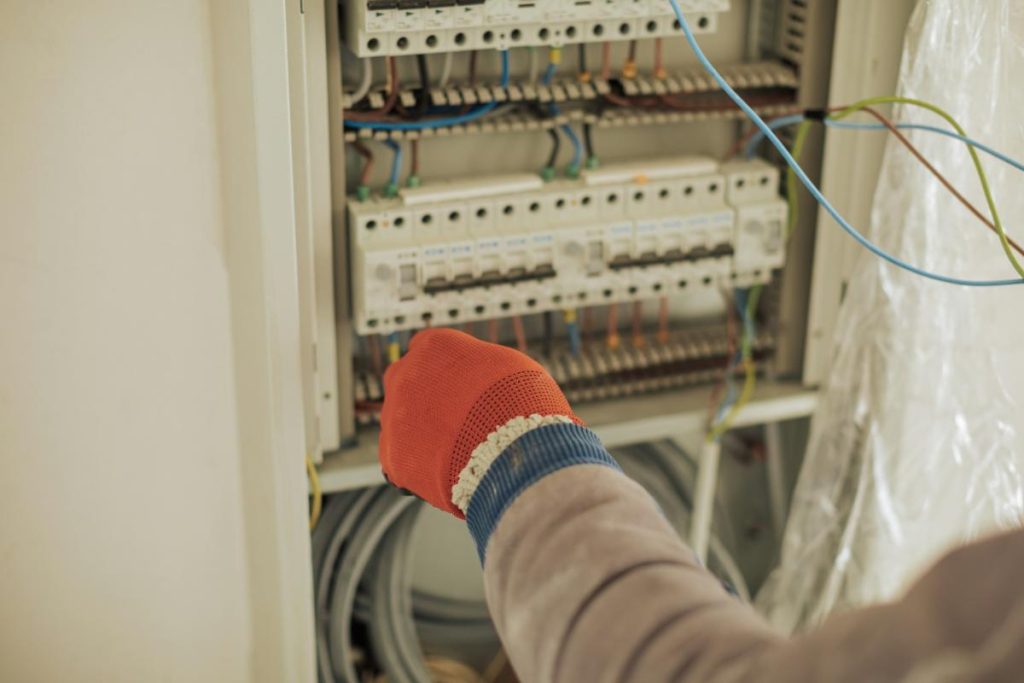When working on DIY projects around the house, electrical safety is critical. Misusing electrical tools can cause serious injuries, damage your property, or even lead to fatal accidents. That’s why it’s important to prioritize safety when using these tools.
Luckily, you can take several simple steps to prevent electrical accidents. These range from making sure your workspace is properly set up for using electrical tools to wearing the right safety gear. Following these precautions could save your life.
For major electrical work, it’s best to hire a professional electrician for private power pole installation and repairs. You can rely on experts like The Local Electrician for safe and effective electrical services.

Basic Electrical Safety
As a DIY enthusiast, your safety should be the utmost priority. Electrical accidents can be catastrophic; that’s why understanding basic electrical safety is so important.
Know the Basics
Start with the fundamentals. Learn key safety principles, like keeping water away from electrical circuits to avoid shocks or worse.
Use Tools Properly
The appropriate use of electrical tools can’t be overstated. Always operate them according to the manufacturer’s guidelines to reduce risks and ensure your safety.
Watch Out for Hazards
Stay aware of potential hazards. Overloaded sockets, faulty wiring or exposed cables all pose significant dangers. Regular inspections can nip these problems before they escalate.
Stay Focused
Maintaining concentration when handling electrical equipment is critical. A moment’s distraction may lead to severe accidents. Concentration keeps accidents at bay.
Check Your Workspace
Carefully evaluate your workspace for potential electrical risks. Uncovered wires, overloaded power strips, and faulty equipment elevate the danger levels significantly.
Inspect Your Tools
Regular inspection of your corded tools and power tools is crucial. Make sure that tools’ electrical wiring is intact and free from frays or wear marks.
Look for any visible damages on your equipment. Loose parts or excessive sparks might indicate an underlying electrical issue.
Avoid Overloading
An overloaded socket is a disaster waiting to happen. Avoid plugging multiple power-demanding devices into a single outlet.
A surge protector can protect your tools and equipment against power surges, reducing electrical risks during your building sessions.
Maintain Dry Conditions
Water and electricity are a dangerous mix. Always make sure your hands and workspace stay dry when handling electrical equipment or outlets.
Use Personal Protective Equipment
Electrical projects require you to prioritize safety, and personal protective equipment (PPE) like insulated gloves, safety glasses, and flame-resistant clothing are essential for this.
Without quality PPE, your risk increases for serious injuries such as burns or electrocution. Always ensure your PPE is appropriate for the task at hand.
| PPE Type | Purpose | Suitability |
| Insulated Gloves | Shield from electrical shocks. | General electrical tasks. |
| Safety Glasses | Protect eyes from sparks or debris. | Cutting wires, soldering components. |
| Flame-Resistant Clothing | Gives protection against burns. | All tasks with potential for fire hazards. |
| Non-Conductive Footwear | Avoid electrical discharge through the ground. | Jobs that entail working in electricity-conductive environments. |
Remember to assess PPE’s condition before use. Worn out or damaged equipment can be ineffective and poses a potential hazard to your safety.
In case you want more detailed insights about various types of protective gear, have a look on this page.
Treat every project as an opportunity to refine your safety procedures. An emphasis on PPE will protect you and those around you.
Unplug Equipment Properly
Unplugging tools when not in use reduces risk. Remember to power down and unplug the equipment correctly, protecting both yourself and the device.
Fire Safety
Fireproofing your workspace can save you from catastrophes. Install smoke detectors and have a fire extinguisher nearby just in case of an unexpected emergency.
Check for Overheating
It’s crucial to keep your work area well-ventilated to prevent overheating. Overheated tools can become hazardous, potentially causing burns or sparking fires.
If you notice a tool getting too hot, stop using it immediately. Allow it to cool down before touching or resuming its use. Be aware of this potential risk.
- Never leave heated tools unattended: If an electrical tool or device is running hot, continuous supervision is necessary to mitigate risks.
- Install a fire alarm: Having a fire alarm in your workspace adds another layer of safety. It’s always better to be prepared in any situation.
- Use heat-resistant surfaces: When working with heated tools, always ensure they are kept on heat-resistant surfaces to prevent any accidental fires.
You can access more information on household safety during the holiday season here.
Ventilation
Keep your workshop well-ventilated. Dust and volatile substances, in combination with electrical equipment, could result in sparks and unexpected fires.
Do Regular Tool Maintenance
Maintaining your electrical tools is important for keeping them safe and reliable. Wipe any residue off them, avoid fluid leaks, and inspect their wiring often.
Kinks in cables are potential fire hazards. Untangle all wires before using your equipment, regardless of size or type.
Handle Flickering Lights in Your Workshop
Flickering lights can indicate potential electrical issues that need immediate attention.
Flickering may be a result of loose or disconnected wiring. These electrical inconsistencies can lead to sparks, electrical fires, or even power outages.
Always call a professional electrician for safe and accurate assessment.
- Assess the Situation: Before anything else, understand what you’re dealing with. Examine the flickering pattern: is it constant or on and off?
- Identify the Socket: Can you identify which socket or appliance is causing the flicker? Differentiate between a particular area or the whole house.
- Avoid Using Faulty Outlets: If a specific outlet or appliance causes consistent flickers, refrain from using it until it’s inspected by a professional.
- Contact a Professional: As emphasized above, only a professional can diagnose and solve electrical issues safely and efficiently.
Your well-being is paramount. Don’t risk it over inconsistent lights or faulty wiring. Keep these tips in mind while dealing with such situations at home.
